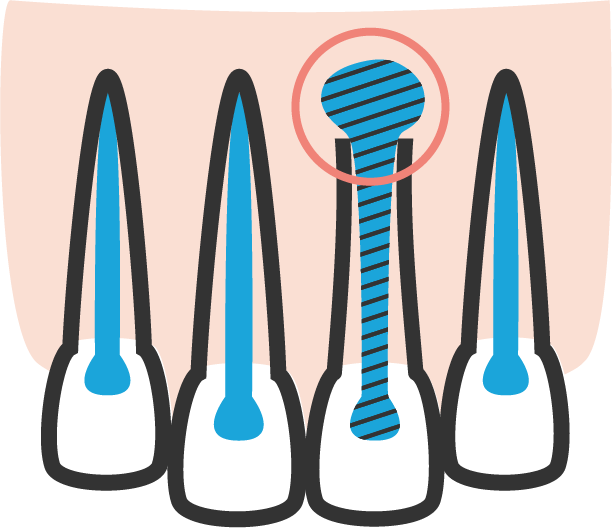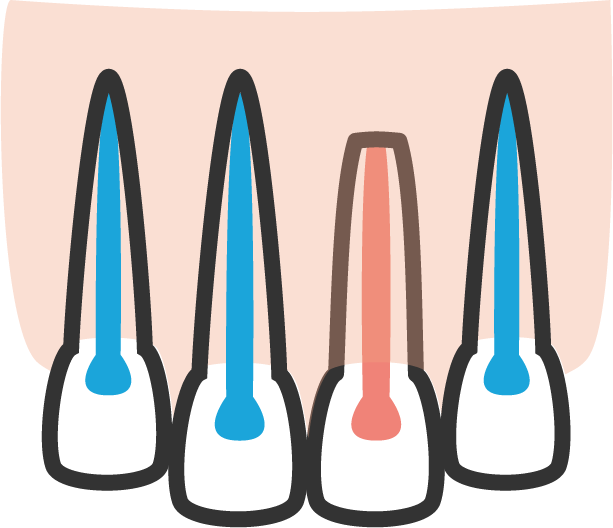Apexification
Apexification is a procedure used to stimulate root development or closing of the root end (i.e., open apex). An open apex is often found in teeth that are not fully developed (“immature”) or whose roots have been eroded away by a process known as resorption. This complicates root canal therapy by making it difficult to seal the root canals with routine methods.
Endodontists are specially trained to treat these difficult situations through apexification. The goal of this treatment is to form a hard tissue barrier at the end of a root with an open apex. This allows the root canal to be sealed in a traditional manner.
Apexification is often successful, however there are some instances when the root end barrier does not form or the resorption process continues. Situations such as these may require surgical treatment of the root end or necessitate the removal of the tooth.

Most teeth have cone shaped root canals that taper from the crown to the root end of the tooth. When a tooth does not close at the root end of the tooth it is called an "open apex".

Apexification forms a hard tissue barrier at the end of the root, allowing the root canal to be sealed in a more normal manner.
Signs and Symptoms
This condition is detected with an x-ray typically in young patients (between ages 4 to 18) or related to teeth that have experienced trauma.
Pre-Op Instructions
We will discuss the procedure in detail with you once the initial exam is done so you know exactly what to expect. You should not take pain medication 4-6 hours before your scheduled appointment to avoid masking any symptoms when we test the area.
Post-Op Instructions
During treatment, a medication is placed within the root canals of the tooth and sealed inside with a temporary filling material. The medication must be replenished periodically over a 6-18 month period. Since the number of visits and the extent of treatment required to achieve a root end barrier varies with the situation, the doctor will not initially be able to determine the total length of treatment time. However, the doctor will determine the specific intervals at which to replace the medication and this may vary from every 2-4 months. When it is determined that a root end barrier has formed, the root canal therapy will be completed. You will then return to your dentist for a final restoration.